With the Papillon P42 tandem glider, passengers and pilots alike have fun. A clearly arranged line design, very pleasant handling and high glide ratio make the P42 a reliable transporter.
The tandem glider, where you could forget that you are flying a tandem glider. Its handling is agile, its turning ability high and its control pressure low – making it almost like a solo glider.
It reacts precisely and without delay to control impulses and is therefore very easy to turn. The P42 reliably converts thermal energy into height.
- Manufacturer
- Papillon Paragliders
- EN
- B
The tandem glider, where you could forget that you are flying a tandem glider. Its handling is agile, its turning ability high and its control pressure low – making it almost like a solo glider. It reacts precisely and without delay to control impulses and is therefore very easy to turn. The P42 reliably converts thermal energy into height. The P42 can be started very well with a low take-off speed and therfore short take-off distance. Thanks to its good low-speed flight characteristics and high performance, the P42 glides very well when landing, making it easy to land. Due to the intelligent material mix of the P42 and its high-quality manufacturing, a low canopy weight and long service life can be achieved. The Sharknose ensures high stability and an extended inflow area. His canopy reactions are moderate and subdued. In addition to the Sharknose, the PPN supports increased profile fidelity along the leading edge. Elaborate calculations of the ballooning and optimized wing pre-stressing ensure the perfect flow around the profile. The High Pressure Crossport Design (HPCD) optimizes cross-ventilation of the cross ports and creates a balanced inside pressure of the wing. In the rear area, Miniribs (MRB) and the Brake Gathering System (BGS) ensure efficient power transmission of the brakes. The riser is equipped with a new trimmer system. The effective system prevents the profile from warping by not only accelerating the D and C levels, but also changing the B level in relation to the angle of attack. As a result, the shape of the profile is retained, resulting in significantly better gliding. A special clamping device is mounted on the D-risers, which allows the pilot to fix the brake lines in any position. This way you can take care of the passenger even in turbulent conditions. A separate A-riser makes flying with Big Ears easy.
Features






- The PPN and the sharknose provide a higher profile fidelity alongside the cell opening.
- Elaborate calculations of the ballooning in combination with the optimized pre-tensioning of the wing ensure the perfect flow around the profile.
- The High Pressure Crossport Design (HPCD) provides an ideal cross aeration of the crossports and ensures a balanced internal pressure in the whole wing.
- In the rear part of the wing Miniribs and the Brake provide an efficient force transmission of the brakes.
- The riser is equipped with an innovative trimmer system. The effective system prevents the warping of the profile by not only accelerating the D and C level, but also changing the B level in relation to the angle of attack.
| P42 | 42,5 |
|---|---|
| Takeoff weight [kg] | 140-230 |
| Flat area [m²] | 42,5 |
| Projected area [m²] | 36,0 |
| Flat wingspan [m] | 15,149 |
| Projected wingspan [m] | 11,898 |
| Flat AR | 5,4 |
| Projected AR | 3,931 |
| Chord: center / wingtip [m] | 3,422 / 0,780 |
| V-Trim [km/h] | 37-40 |
| V-Max [km/h] | 43-46 |
| Bridle height [m] | 9,09 |
| No. of cells | 52 |
| Glider weight [kg] | 7,3 |
| Bridle length [m] | 457,52 |
| Line diameter [mm] | 0,9 / 1,1 / 1,3 / 1,5 / 1,8 / 2,2 |
| Speed system / trimmer | No / Yes |
| Certified standards and procedures | LTF 91/09 & EN 926-1:2006, 926-2:2013 |
| Folding lines used for certification | Nein |
| Certification No. | EAPR-GS-0858/18 |
| Certification | EN-B /LTF-B |
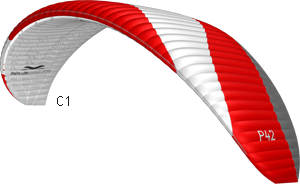
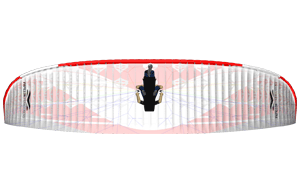
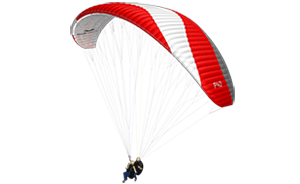
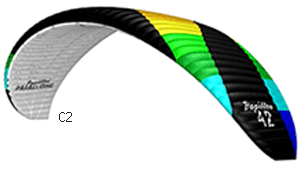
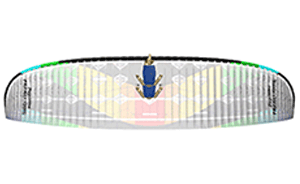
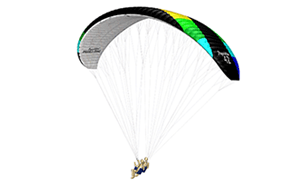
- Paraglider
- Compression Bag
- Compression Strap
- Manual (PDF)
